|
| GENERAL |
MEDICAL IMAGING GROUP
UCL and UCL Hospital Overview of 3D Imaging
We have been developing 3D imaging techniques for about 15 years, using
hardware and software developed here at
UCL and UCL Hospitals.
This is a visual overview. For more text and technical details see
our General Overview page. Fig. 1. A skull image 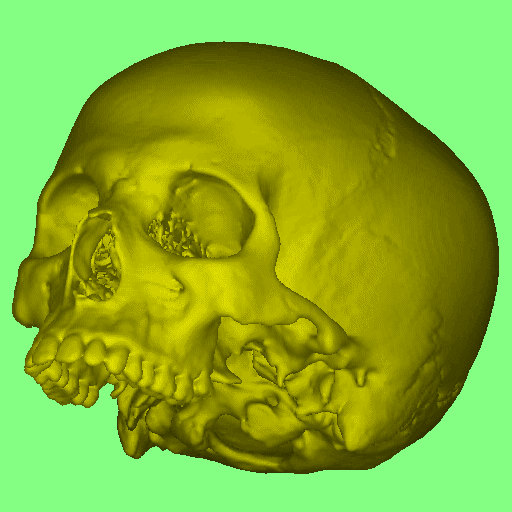
This is a 3D rendered view of a high quality CT image of a dry skull. Most of the required information is seen on this view; or on rotating; or on extracting detail. 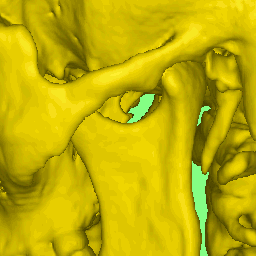 . .
However if we scan a complete head, there is information within the skull which can be seen by making cuts. 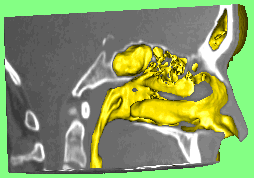 . . Cutaway views can be produced in many different ways, as shown in this image of the pelvis/sacrum. 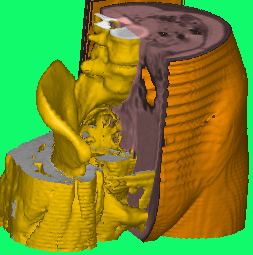 . . The following image shows an (abnormal) airway highlighted within the bony structures of the head and neck. Only these 2 components are visible. 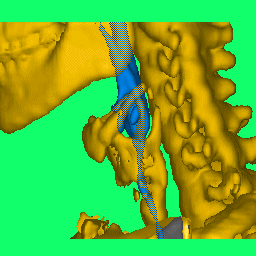 . . |
|---|

